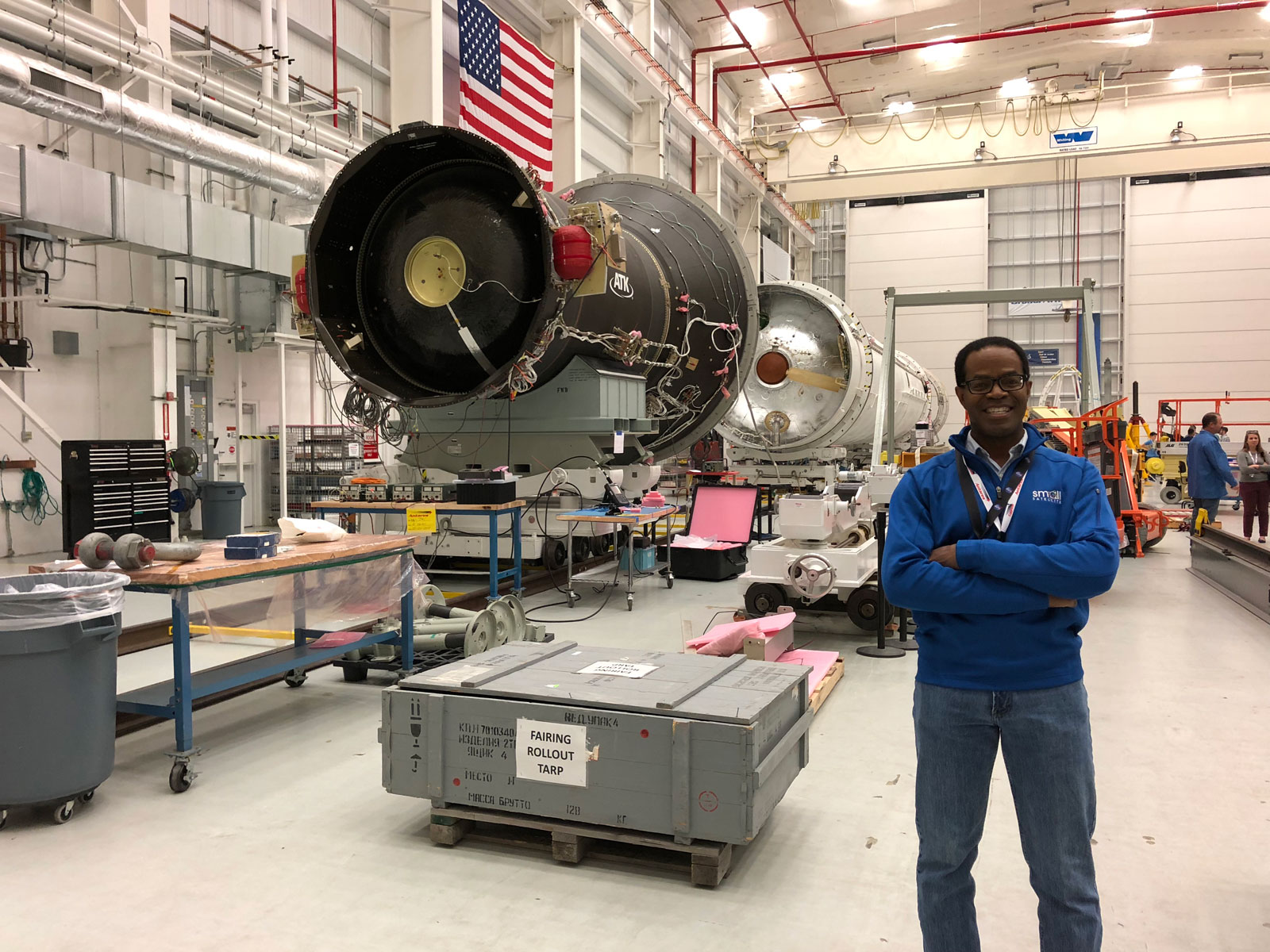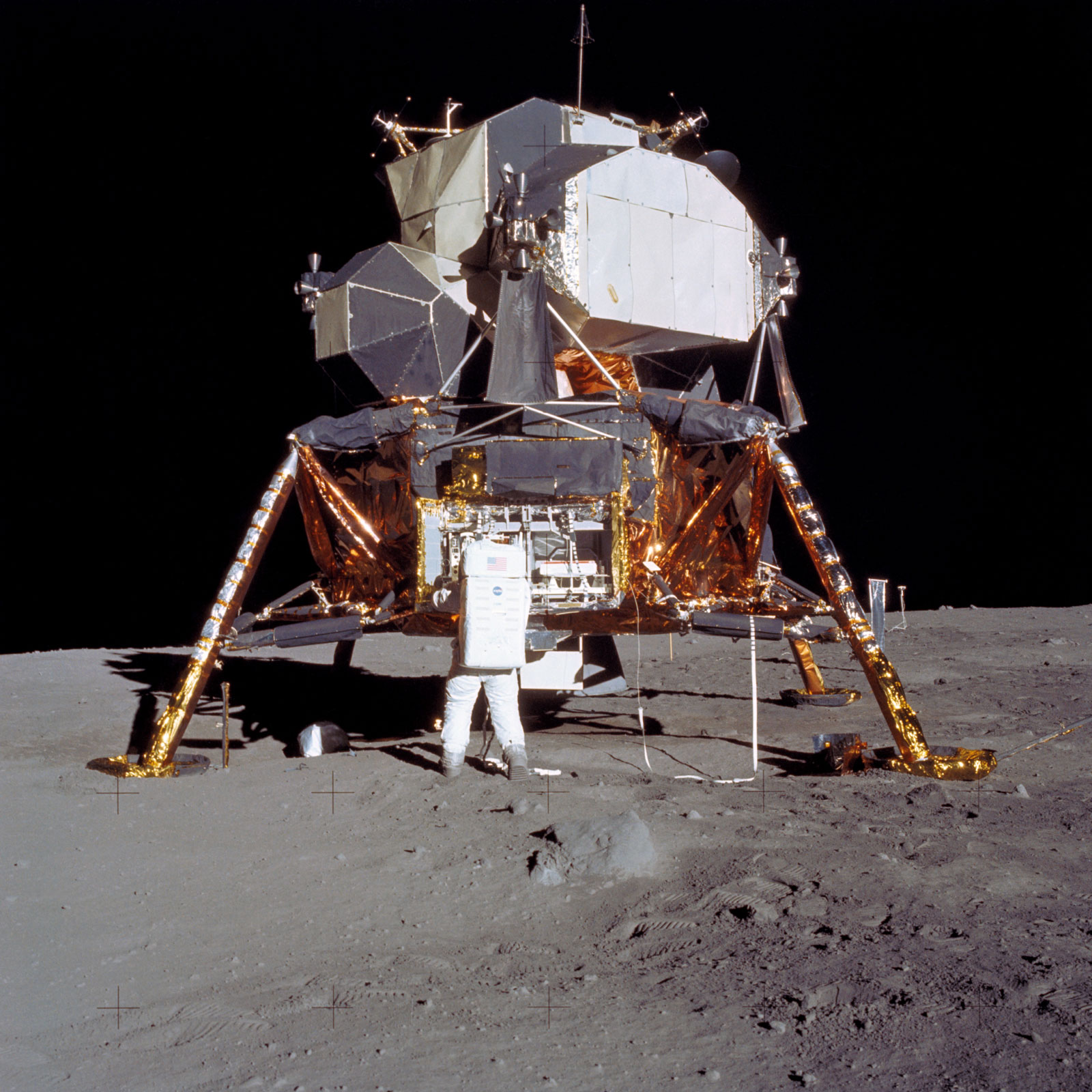
Charles Norton
Acting Chief Technologist - NASA's Jet Propulsion Laboratory (JPL)
St. Anthony’s High School | Smithtown, New York
Rensselaer Polytechnic Institute | Troy, New York
M.S. and Ph.D. in Computer Science
Princeton University | Princeton, New Jersey
B.S.E. Electrical Engineering and Computer Science
Charles Norton has worked at NASA for more than two decades but he’s had a connection to the agency since 1993 when he was a graduate research assistant at NASA’s Jet Propulsion Laboratory (JPL) in Pasadena, California. Recently, he was Special Advisor for Small Satellite Missions at NASA Headquarters. He was named JPL Associate Chief Technologist in July 2020, and Acting Chief Technologist in June 2022. He shares how his parents, the bassoon, and ballroom dancing influenced his life and career.
I'm originally from Long Island, New York – Smithtown. I think of myself as a product of the Space Age. It's how I ended up being born there. My father worked at Grumman Aerospace Corporation in Bethpage, New York.
I went to Princeton University for my undergraduate degree and to Rensselaer, also known as Rensselaer Polytechnic Institute (RPI), for my master's and Ph.D. Rensselaer is the oldest engineering school in the United States, located in Troy, New York. Of course, Princeton is in Princeton, New Jersey. My undergraduate degree is in electrical engineering and computer science and my master's and Ph.D. are in computer science.
My first interest was certainly sparked by family history. My father, James Francis Norton, worked on the Apollo Lunar Module at Grumman Aerospace Corporation.
He passed just after I was born. Although I didn't get to know my father, my mother did share stories of what it was like during the Apollo Era and the race to the Moon. They would have engineers coming over to our home, working on the Lunar Module's development even during social gatherings.
I also had a great interest in, and enjoyment of, mathematics and science in school. STEM was an area where I showed some ability, and it seemed like an exciting career path fostering both creativity and change. My mother, Alva Norton, was a mathematics teacher and administrator at a high school for gifted children, so I’m sure she influenced me as well.
During the era when I was growing up consumer electronics and computing (especially personal computers) were very new and novel also contributing to my interests at that time.
I was looking (during my Ph.D.) for a novel topic related to computing and it turned out that the early web browser called Netscape Navigator had just become available as an online search tool. I learned about opportunities to apply for NASA graduate fellowships. So, I applied, was admitted, and decided to come to JPL, which at the time had supercomputers that were on the TOP500 list of fastest supercomputers in the world.
I also knew this would be an opportunity to work on a practical application of high-performance computing (in my case computational plasma physics) as part of my dissertation research, and that was of interest to me. And of course, having that family background with the space agency – this just looked like a good match to start my career.
I was very fortunate to discover this opportunity by searching the web, applying, getting admitted, and then pursuing it.
For many years at JPL, I was involved in computational science and engineering. One year, I wrote a proposal to perform some computational image processing work – which would involve developing new algorithms for a special type of flight computer for a new type of instrument that JPL was developing.
But it turned out that after I won that proposal, I was also given an opportunity to support the Earth Science Technology Office at NASA Headquarters, so I accepted that programmatic role instead. My co-investigator took over the computational image processing work. After she completed the project, we pursued space flight testing of that hardware on a CubeSat.
Back at that time, around 2010 or so, CubeSats were an interesting potential mechanism to validate the performance of new technologies in space.
To make a long story short, the mission was developed and flown successfully with collaborators at the University of Michigan and JPL.
From that time forward, I became more deeply involved in exploring the potential of small satellites to support not only flight validation of new technology but also innovative science missions.
As a result, based on past programmatic activities and SmallSat flight missions I've managed, that led to my recent role in helping to establish NASA's overall strategy for how to incorporate SmallSat missions as part of their science, technology, and exploration goals across the agency.
The advice I would give is to explore and leverage the numerous resources available today within the context of your personal goals in science and engineering.
This should include the diversity of people across the industry and the perspectives that come either through personal discussions or technical papers. It’s also critical to always find new ways to continually challenge yourself.
If you really believe in what you're doing, just stick with it. Everything will work out even if there are challenges that you have to overcome to achieve your goals.
Persistence and confidence in your abilities – and knowing how to learn from and contribute to a diverse community of scientists and engineers that share your desire for mission success – is very important.
Trying not to take on too much is always a challenge. And I think the best way to overcome this is to ensure that you schedule sufficient time to support your other interests.
I've been a musician, a bassoonist, for many years. Even though time is precious, finding a way to remain engaged with the symphonic performing arts community remains important to me.
People are very busy these days, so it's important to know how to manage what you choose to take on. Enjoying the benefits of close family connections, and enjoying all life has to offer – I believe both can help anyone overcome most challenges.
I would certainly say my parents were both inspirational. Sadly, both are now deceased. My mother passed away back in 2000, not long before I was married. She took on a lot, raising our family essentially by herself. My father’s legacy certainly has been inspirational and I felt it strongly while celebrating the 50th anniversary of the Apollo landings and even throughout the 60th anniversary of NASA as well.
It does make you think back to all that has occurred and what people have accomplished, in an age where there was a lack of diversity in science and engineering. I happen to be African American, and I appreciate how my parents must have found their unique talents that others recognized and respected. In this regard, they have been very inspirational.
In many ways, I’m also inspired by my two daughters because I can see the challenges kids must face and overcome these days in actively managing their educational development and their personal lives while growing up. Their environment is very different than what I experienced when I was growing up.
All the small satellite projects I've been involved with have certainly been my favorites. One of the benefits of working on small missions is that they occur rapidly, so you can be involved in a number of missions that go to space and perform a wide variety of very interesting technology demonstrations and science measurements involving outstanding teams.
So, certainly, it has been a highlight of my career, but even my prior work in computational science has been exciting. I spent many years with teams developing solid earth dynamics and other simulations and reminiscing about those projects is pleasurable to me.
I've played the bassoon since I was very young and still perform with the Caltech Symphony. In fact, when I was graduating from high school, I had to choose between becoming a professional musician as a bassoonist or pursuing science and engineering. Indeed, one of my teachers arranged the rare opportunity to audition for the principal bassoonist chair of the New York Philharmonic, a position that opens up perhaps once every 40 or 50 years.
But in the end, when I was given the opportunity to study engineering at Princeton, I decided against the audition and to continue to perform as a bassoonist in my spare time. I deemed this a less risky long-term career path simply because people with skills in electrical engineering and computer science were in demand.
I was a competitive ballroom dancer back in graduate school. In fact, I was involved many years ago in setting up the original Argentine Tango group at Caltech in the early 1990s. As it turns out that's how I met my wife, Fei Chen, as she was a postdoc at Caltech and we were both Milongueros. Sadly, we don't get to dance these days, but hopefully, we will one day return to the tango. That's a fun fact that we certainly have enjoyed together.
The image of the Apollo 11 LEM on the Moon. I think about that quite a lot, especially lately given the anniversary of the landing. Many people do not know there were small satellites deployed from the Apollo Command and Service Module to perform lunar exploration science. So, it’s an interesting connection back to my beginnings in that regard.

Planetary science is a global profession.

